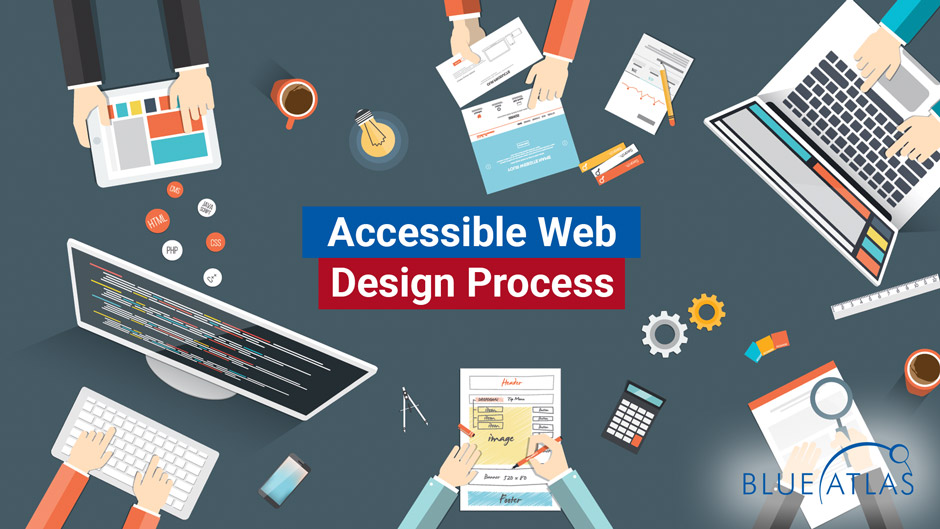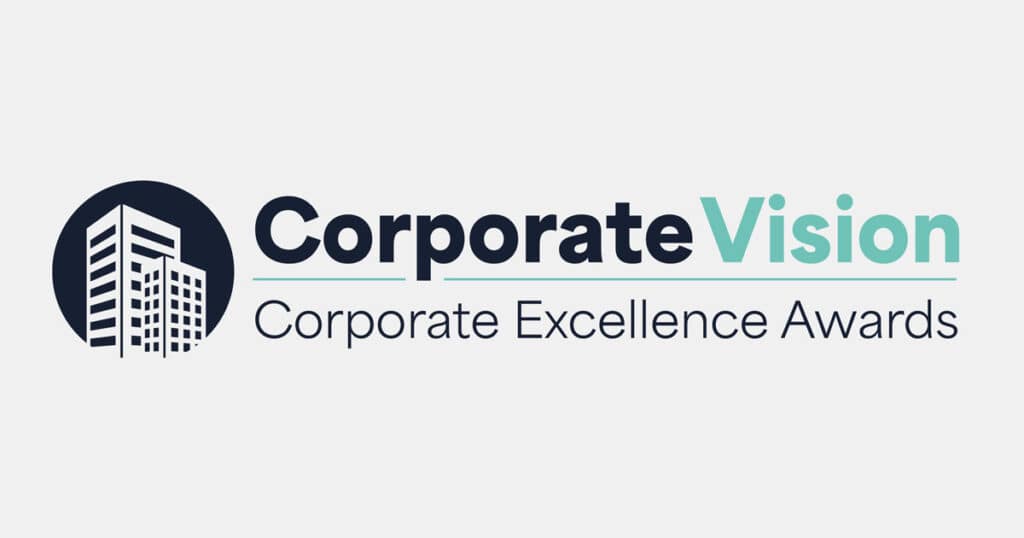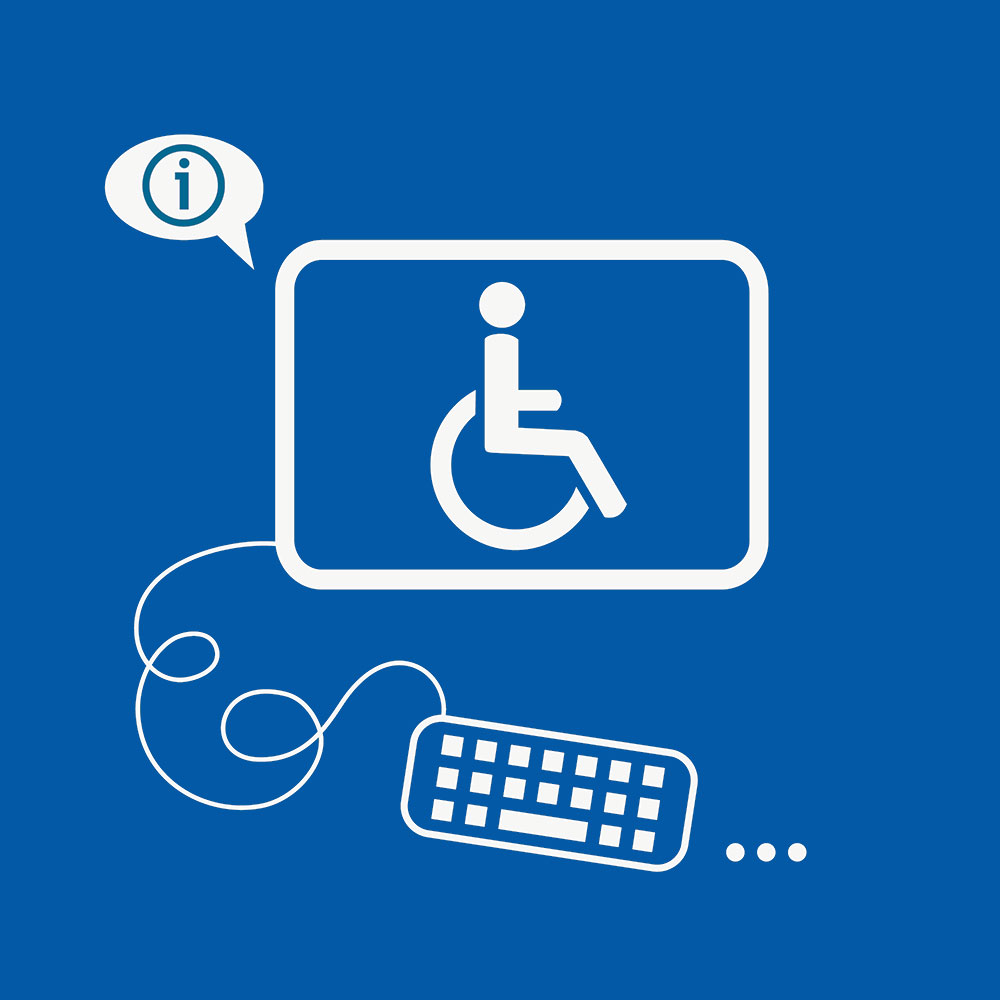If your business is new to compliance with accessibility standards or hasn’t tackled a larger website project before, then you may be wondering what the accessible web design best practices look like. Much of this depends on your business website, what sort of capabilities it needs to have, and if it has been updated in the past.
What are the ADA standards for accessible website designs?
The ADA standards for accessible website design are based on the Web Content Accessibility Guidelines (WCAG) and include ensuring websites are perceivable, operable, understandable, and robust for all users, including those with disabilities.
Accessible Web Design Best Practices
Let’s take a closer look at what this process involves, where you begin when working with an experienced agency, and how to ensure that accessibility issues don’t trouble you again.
Start with an Audit of Your Current Situation
If your business has a previous website that you need to optimize, it’s best to start with a full audit that will run a number of tests on your website content and show where it poses problems for those with disabilities.

There are a number of automated accessibility testing services to use for this process: The best of them make sure to test for important issues like:
- Required compliance under the ADA (Americans with Disabilities Act) and similar legislation.
- Running websites through screen reader systems to see how they perform for those with visual impairments
- Testing for keyboard accessibility for those who cannot use cursors, etc.
- Checking for proper HTML tags and coding for accessibility.
Automated tools can only do so much, so this is also the stage where your business talks with an expert about your accessibility goals, ensuring that your site avoids liability issues and any particular problems the testing may not have caught. This provides invaluable data that can be used to create a plan.
If you do not have a website, auditing tools aren’t as necessary, but it’s important to consider all the accessibility requirements your site will have. This will make it easy to incorporate the right kind of accessibility from the ground up and provide a template for future growth as well.
Decide How to Proceed with the Website Changes
After testing and consultation, your business likely has design issues to redo to meet accessibility compliance. This is where working with an experienced marketing agency can be very useful. There are many ways to break down these changes, but common options include:
- Provide your website to an agency and allow them to make changes. Developers experienced in accessibility design will be able to pinpoint issues and correct them quickly. This often involves discussion about certain website layout and appearance changes but allows the business to stay largely hands-off and focused on its own competencies. This is also a good option if you want as little website downtime as possible.
- Splitting the work between third-party developers and your own team. This is an option if your business wants to divide tasks between small changes your team can handle and larger development projects that a firm with experience best tackles.
- Handling all changes in-house. Here, the business team handles all website changes according to their timetable. This allows for flexibility but generally requires the team to include experienced web developers and IT professionals to succeed.
Meeting Deadlines for Scheduled Changes
With the plan laid out, it’s time to get to work! A good plan will have project milestones for accomplishing optimization. Developers will work to meet these milestones according to the scheduled deadlines. It’s common for there to be a little leeway with these milestones to make room for the unexpected.
Clear an Additional Audit
After completing all project milestones, your business should have a fully functioning website that includes all required accessibility features. The next step is to run it through testing again and make sure it passes all compliance tests. This final stage of testing is important because it double-checks that all changes have had the intended effect and that there are no basic errors in coding or other issues that may have happened unnoticed.
This is also an excellent time to examine the mobile version of your website and make sure that it is functioning correctly and that all accessibility features are functioning correctly on it as well. The WCAG and similar guidelines have specific advice for what mobile sites need to be able to do.
Develop a Guide for Future Website Updates
A website isn’t a static creation – good websites are constantly updated with new content, more information, and important changes as a business grows. That means that a vital part of accessibility optimization is creating a guide for future content creation or incorporating accessibility-friendly steps into your current content guides. This allows your current team and future employees to always know how to create content that complies with accessibility standards. Common steps include:
- Make sure that any new images have proper Alt-Text descriptions.
- Add new text to a webpage so a screen reader can easily read.
- Create new web forms or buttons with the proper tags for the screen reader or use an accessible alternative like ARIA descriptions, etc.
- Make sure that all language and terms used are both clear and consistent.
- Avoid problematic content types like tables (which are very difficult for screen readers to interpret).
Create a Framework for Accessibility Across Online Content
Your website is not the only place your brand is distributing content online. A good accessibility guide should also be applied to the other digital content your team is creating. That includes images, text, and CTAs used in social media or email. Content teams should understand that these best practices must be used when delivering online content.
Key Takeaways
Implementing accessible web design best practices is crucial for inclusivity and legal compliance. The process outlined involves auditing current designs, consulting experts for enhancements, and creating a framework for ongoing accessibility. This proactive approach ensures websites are user-friendly for all, including those with disabilities, enhancing user experience and business reputation.
Looking for Help with Your Accessibility Plans?
Blue Atlas Marketing has experienced professionals skilled in re-designing or building websites that meet all accessibility standards. Let us know what sort of project you have in mind, and we can discuss a roadmap to completing those important changes and improving your website at the same time.







